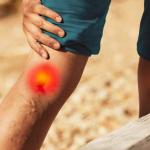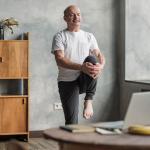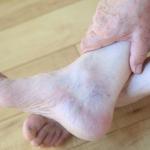
Does Sun Exposure Affect Your Veins?
When it comes to your skin’s health, you probably already know that sunshine is not your friend. Prolonged sun exposure can contribute to premature aging, potentially cause wrinkles, and significantly increase the risks of developing skin cancer. But did you know that too much sun can also impact your vein health?
Vein disease –– or venous insufficiency –– is a common condition in the United States, affecting over 40 million individuals. It is also the underlying cause of painful, swollen, and unattractive varicose veins and spider veins.
Symptoms of vein disease include:
- Swelling in the legs and ankles
- Leg pain that feels better when you walk or raise your legs
- Itchy, dry skin
- Tired, aching legs
- Burning in the calf or thigh
- Numbness or tingling sensation
- Difficulty standing for long periods
- Venous ulcers, or non-healing wounds on your legs
If you suffer from any of the above issues, please contact your doctor. In addition, you may want to avoid the sun to keep things from getting worse. When you do head outside, we recommend wearing protective clothing and sunscreen with SPF 30 or higher. You may also want to look into available vein treatments to avoid potential complications like blood clots and venous ulcers.
Below, you’ll find everything you need to know about vein disease, sun exposure, and minimally-invasive vein treatment options.
Spider Veins and Sun Exposure
Are spider veins caused by the sun, and will the sun make them worse? To gain some insight, you’ll first need to understand what spider veins are and what causes them to appear.
Spider veins are dilated capillaries that are located close to the skin’s surface. They are typically small and thin, measuring between 0.5 mm and 1.0 mm in diameter. They can be red, purple, or blue in color. These veins are not typically raised, bulging, or swollen like varicose veins. Instead, they tend to form in weblike patterns –– thus, the name.
Common sites for the development of spider veins include the nose, cheeks, and upper chest. This is because these areas get more sun exposure than other parts of the body. If you don’t protect them, the collagen stores located under the skin’s surface and blood vessels are broken down by the sun.
Along with sun, other potential causes for spider veins include:
- Family history of vein disease: When it comes to malfunctioning veins, there is a strong hereditary link.
- Jobs that require prolonged standing: Veins need to work harder to pump blood back up to the heart. When standing for a long time, blood tends to pool in the legs, ankles, and feet.
- Obesity or being overweight: Excess weight can weaken vein valves over time, causing them to malfunction.
- Pregnancy: A combination of increased blood flow and additional weight can raise your vein disease risks.
- History of blood clots: Blood clots can damage your vein valves and result in them malfunctioning.
- Use of birth control pills: An influx of hormones, particularly estrogen, can weaken valves and cause spider veins to appear.
You can’t control all your risk factors for spider veins, but you can control some of them. Avoid prolonged sun exposure to protect your vein health.
Varicose Veins and Sun Exposure
On the other hand, is the sun good for varicose veins? If you suffer from varicose veins, you already know the answer: Your symptoms may worsen during warmer weather.
When things heat up outside, a condition called venous distention can develop in individuals with vein disease. The sun’s warmth causes veins to dilate and fill with more blood. The increased blood flows more easily through the veins, leading to additional vein growth.
Larger varicose veins tend to result in increased symptoms such as:
- Heavy Legs: This is often reported as feeling like you have weights on your ankles.
- Swelling: Occurs in the legs, ankles, or feet. Be on the lookout for tight shoes or visible swelling in the legs.
- Itching and Burning: Although this may seem like a skin issue, you should mention it to a vein specialist if nearby swollen veins.
- Pain Relief When Legs are Elevated: If you sigh with relief when you put your feet up, this may be a sign of malfunctioning veins.
Vein Disease Treatment
You may be tempted to wait and see if your spider veins and varicose veins disappear when temperatures cool. But the reality is that your malfunctioning veins aren’t going to go away on their own. Plus, your problematic veins can lead to potentially dangerous health conditions. These include the development of blood clots and venous ulcers.
If you are avoiding the doctor because you fear vein surgery, we have good news. At USA Vein Centers, our vein specialists offer minimally invasive, non-surgical vein treatment. Our state-of-the-art procedures can interrupt and redirect blood flow from malfunctioning veins.
In other words, you don’t need to suffer through a lengthy surgery or deal with a painful hospital stay. In fact, most of our treatments take only 15 to 30 minutes and are performed right in our clinics. Afterward, you can leave and return to your usual activities.
Our experienced vein treatment specialists can perform:
- Endovenous Laser Therapy (EVLT)
- Varithena vein treatment
- ClariVein™
- Ultrasound-guided sclerotherapy
- Visual sclerotherapy
Contact USA Vein Centers
We believe that vein treatment can improve the quality of your life. Just think –– next time the temperature heads up, you’ll be able to head outdoors without any ugly, painful veins. Perhaps you can even wear shorts!
To learn more about vein treatments, you can schedule an appointment online at one of our 90 clinic locations. If you prefer to consult from the safety and comfort of home, we also offer telemedicine visits. Either way, please be assured that we are following strict precautionary measures to help prevent the spread of COVID-19.
For questions concerning health insurance coverage, please call 888-768-3467. Vein treatment is generally covered by most major insurance plans, including Medicare and Medicaid.





